Morton’s Neuroma, also called interdigital neuroma, is a painful condition that affects the nerves (usually just one or 2) in the ball of the foot.
Morton’s Neuromais a thickening of the nerve in the ball of the foot, most often occurring between the third and fourth toes. This condition can cause pain and discomfort. Often, this condition causes you to feel as if a rock is stuck in your shoe, or something is poking you in the ball of the foot. Several excellent non-surgical treatment options are available.

Morton’s neuroma is caused by the squeezing and irritation of a small nerve called the common plantar digital nerve which provides the sensation to the webspace between the toes. This nerve runs very close to an important supporting ligament of the forefoot, the transverse intermetatarsal ligament which runs across the foot bones.
As the nerve runs under the transverse intermetatarsal ligament in the ball of the foot, it becomes trapped and squeezed against the ligament. The continual pressure on the nerve causes the irritation reaction to reoccur becoming chronic resulting in fibrosis within the nerve and thickening of the nerve. Unfortunately, this thickened, fibrotic nerve further compresses the nerve cells causing greater pain. The pain can become so intense that it prevents weight bearing and walking. This is how Morton’s syndrome develops.
Common causes of Morton’s Neuroma include:
By addressing these risk factors, you can reduce your chances of developing Morton’s Neuroma.
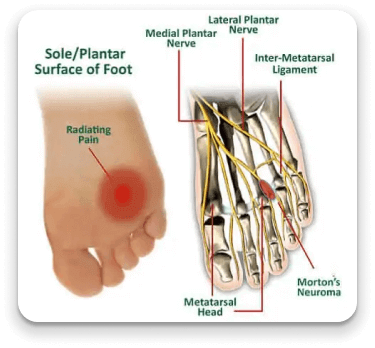
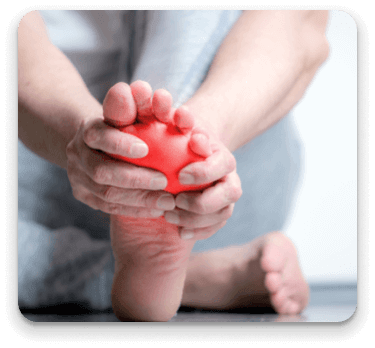
Morton’s neuroma symptoms are typically on one side of the foot, usually between the third and fourth toes but the pain can extend outwards or even involve the whole side of the Morton’s foot. You may not likely feel a lump in your neuroma foot, because a neuroma is generally small. You may feel a burning pain in your forefoot, and this pain can extend into the toes and be hard to find relief from Morton’s neuroma
These symptoms may come and go but tend to worsen over time without treatment. You may experience flare ups such as two attacks in a week but then have no symptoms for over a year. However, the attacks tend to become more frequent as time progresses. A foot may contain two separate Morton’s neuromas.
Making lifestyle adjustments, such as choosing proper footwear, can help reduce the risk.
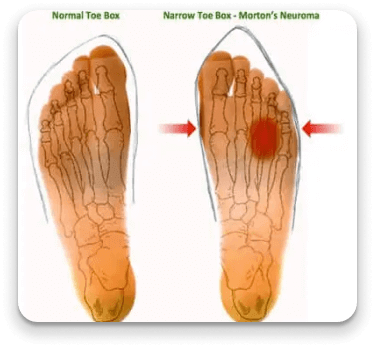
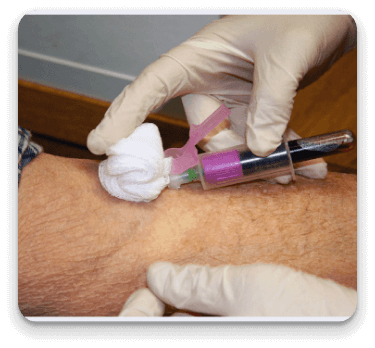
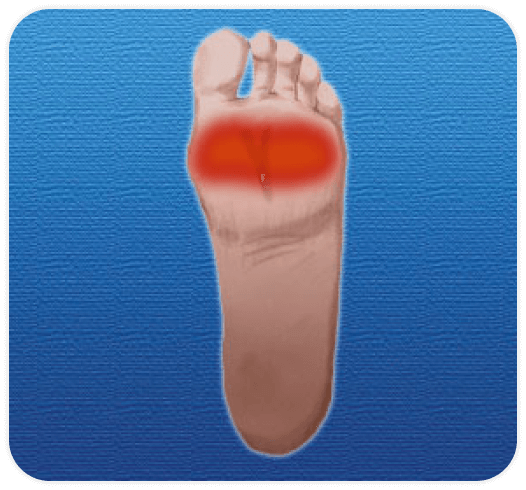

At the Center for Morton’s Neuroma, Our Aim is To Avoid Surgery and so our philosophy is to treat your Morton’s neuroma with the most appropriate non-surgical treatment for you. In most cases our treatment of choice areUltrasound guided non-surgical procedures. These are excellent long term non-surgical treatment options for Morton’s neuroma.
We may combine these with an orthobiologic treatment such as platelet rich plasma, and then recommend custom orthotics for even more comfort.
Recent studies have explored innovative treatment approaches, including advanced injection therapies and minimally invasive surgical techniques. Evidence-based research continues to refine the understanding and management of this condition, ensuring better outcomes for patients. See here for research on Morton’s neuroma

Morton’s Neuroma is primarily caused by repetitive pressure or irritation on the nerve in the ball of the foot. Factors like wearing tight or high-heeled shoes, engaging in high-impact sports, or having pre-existing foot deformities contribute to this condition.
Common symptoms include a burning sensation in the ball of the foot, numbness or tingling in the toes, and the feeling of walking with a pebble in your shoe. The pain often worsens with tight footwear or physical activity.
A physical examination by an experiencedprovider is a good start to diagnose Morton’s Neuroma.The gold standard for diagnosing Morton’s neuroma is an ultrasound guided local anesthetic injection. Imaging tests like ultrasound or MRI may be used to rule out other conditions.
Without proper treatment, Morton’s Neuroma typically does not resolve on its own and may worsen over time. Early intervention, including lifestyle changes and non-surgical treatments, are the key to quickly getting back to an active lifestyle.
There are excellent nonsurgical treatment options for Morton’s Neuroma. We recommend and use ultrasound, guided non-surgical oblations such as ultrasound guided cryoablation, ultrasound guided radiofrequency ablation, and ultrasound guided neuroablation. Combine these with platelet, rich plasma, injections, and custom orthotics.
Surgery may be recommended as a least step if non-surgical treatments fail to provide relief. Surgical options involve removing the affected nerve to alleviate pain.
Yes, prevention strategies include wearing properly fitted shoes with adequate support, avoiding high heels, and incorporating foot stretches and exercises into your routine.
While it is not life-threatening, Morton’s Neuroma can significantly impact daily activities and quality of life if left untreated. Early diagnosis and treatment are essential for effective management.


By providing us with your information you are consenting to the collection and use of your information in accordance with our Terms of Service and Privacy Policy.